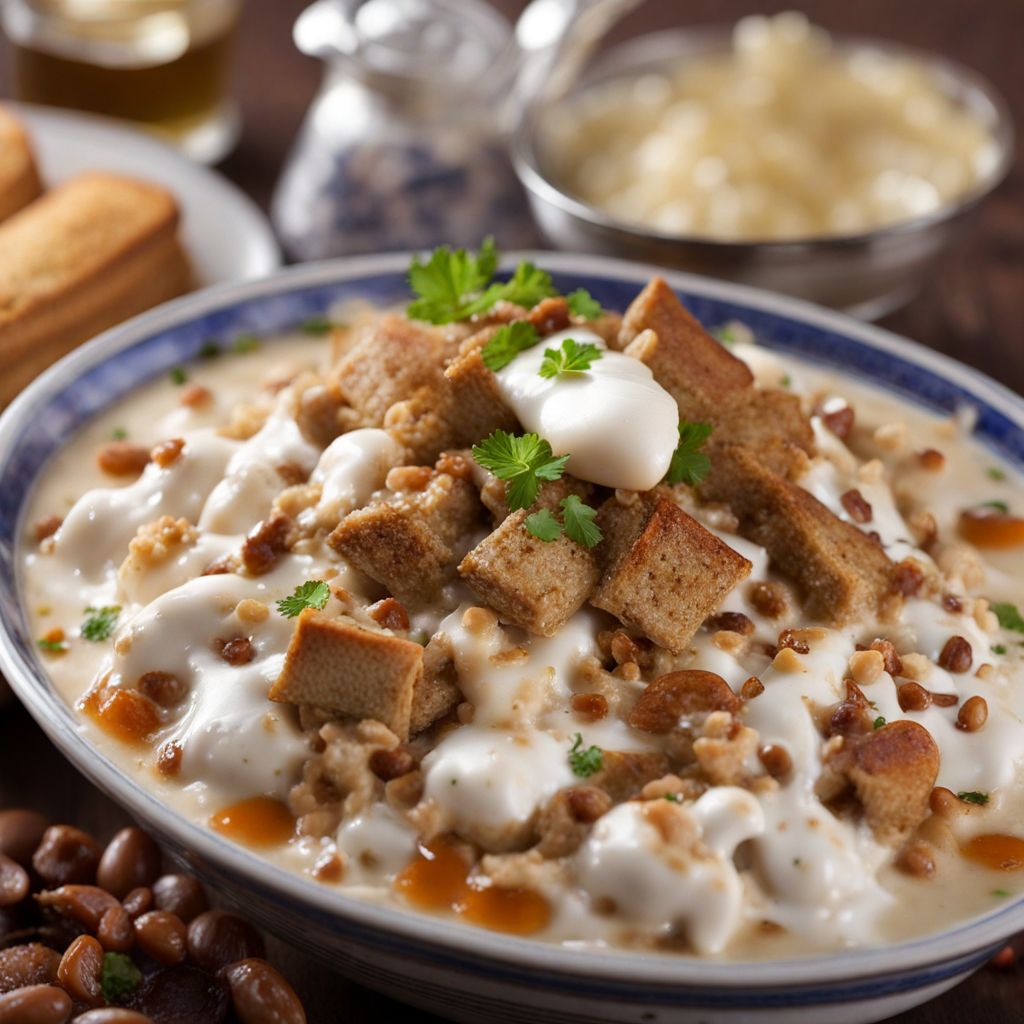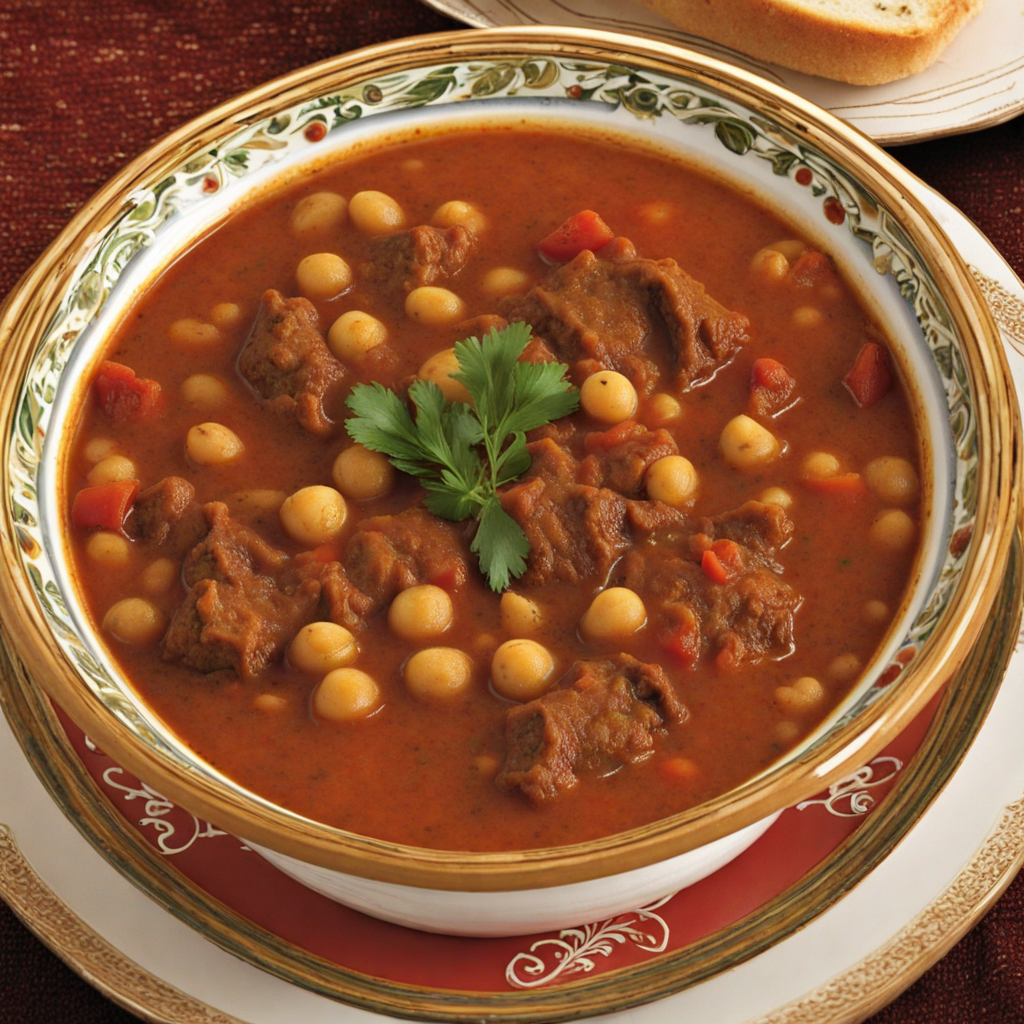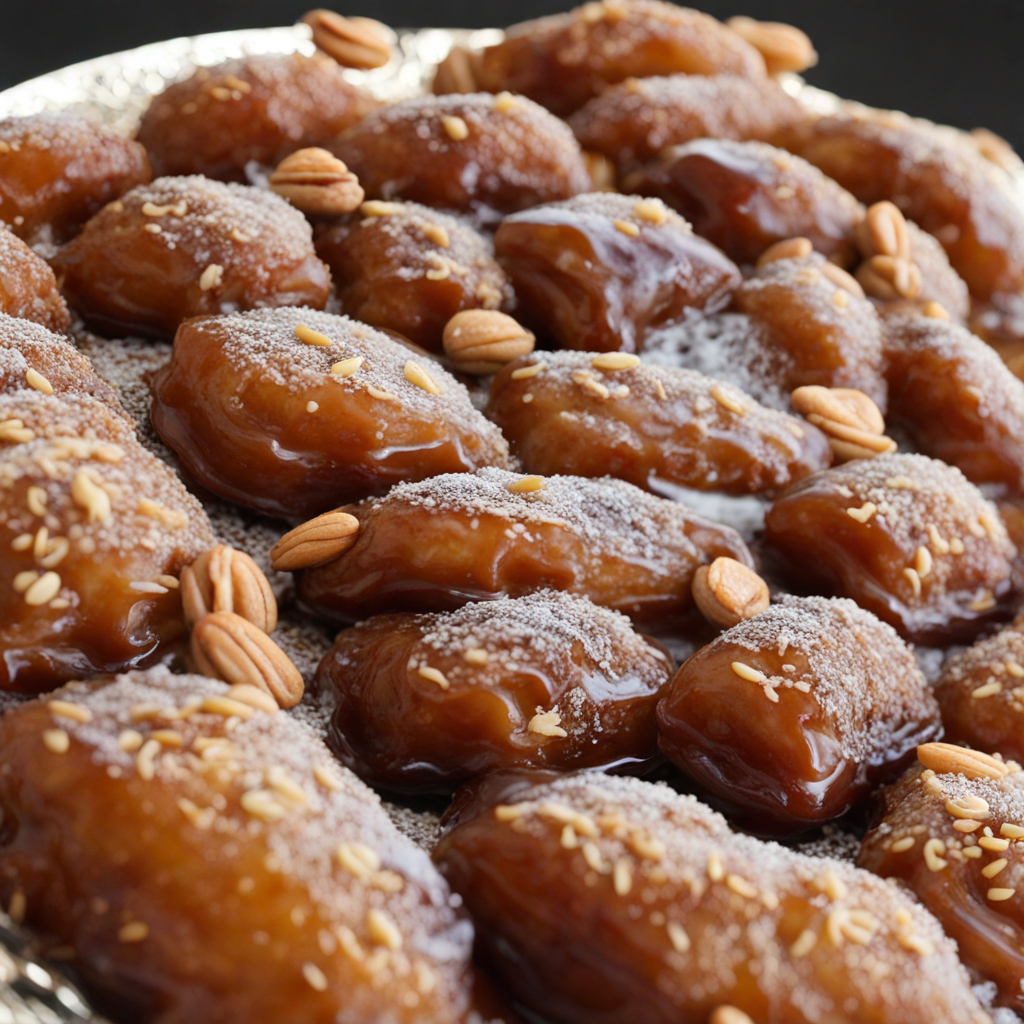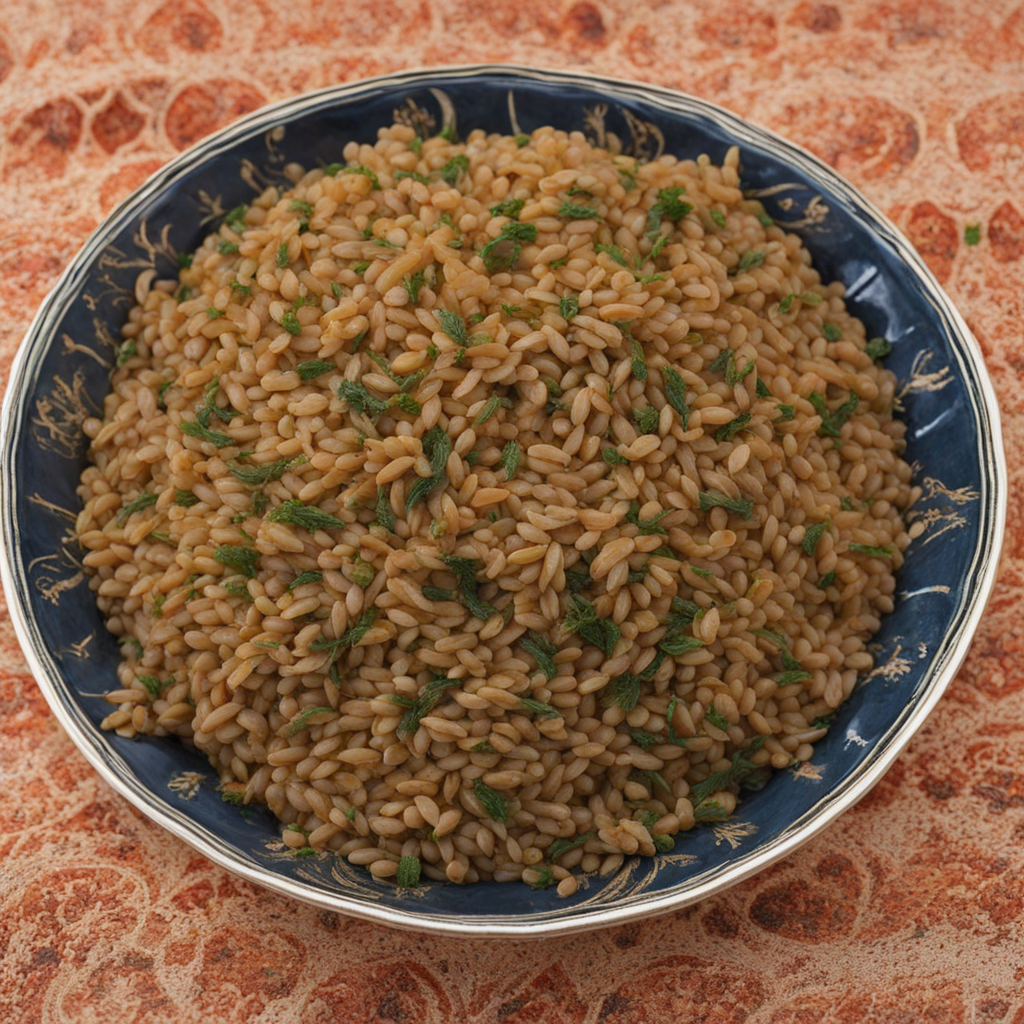Fatteh
Fatteh is a delightful and hearty dish that showcases the rich culinary traditions of Libya. At its core, Fatteh consists of layers of crispy bread, typically pita, which is broken into pieces and served as the base. This bread is then generously topped with a mixture of tender, spiced meat, often lamb or chicken, that has been slow-cooked to perfection, allowing the flavors to meld beautifully. The dish is further enhanced with a variety of spices, such as cumin and coriander, which infuse the meat with an aromatic depth that is both comforting and invigorating. One of the standout features of Fatteh is the creamy sauce that accompanies it, usually made from yogurt or a tahini-based dressing. This sauce adds a luscious, tangy contrast to the savory meat and crunchy bread, creating a delightful interplay of textures and flavors. Toppings such as pine nuts, almonds, and fresh herbs like parsley or mint are often sprinkled on top, providing an additional layer of taste and visual appeal. The combination of warm, cool, crunchy, and creamy elements makes each bite of Fatteh an exciting experience. Fatteh is not just a dish; it is a celebration of community and shared meals, often enjoyed during special occasions and family gatherings. The process of assembling Fatteh can be a communal effort, with friends and family coming together to create this delicious feast. For anyone looking to explore new culinary horizons, Fatteh offers a taste of Libya's rich heritage, inviting you to savor a dish that is both simple and sophisticated, deeply rooted in tradition yet versatile enough to adapt to personal preferences.
How It Became This Dish
The History of فتة (Fatta) in Libyan Cuisine #### Origins of فتة Fatta, a traditional dish in Libyan cuisine, has its roots in the broader Mediterranean culinary traditions. Its name derives from the Arabic word "فَتَّ" (fatta), which means "to tear" or "to break into pieces," reflecting the method of preparing the dish. Fatta is primarily made with layers of bread, meat, and a tangy sauce, typically made from tomato and garlic, and is often garnished with nuts and spices. The origins of Fatta can be traced back to ancient times when bread was a staple in many Mediterranean cultures. Archaeological studies suggest that bread-making dates back around 14,000 years in the region, and the use of stale or leftover bread in cooking has been a common practice across various cultures. In Libya, Fatta likely emerged as a creative way to utilize leftover bread, making it a practical dish for families. #### Cultural Significance Fatta has become more than just a dish; it symbolizes hospitality and communal dining in Libyan culture. Traditionally, it is served during special occasions, such as weddings, religious holidays, and family gatherings. The preparation of Fatta often involves the participation of family members, fostering a sense of unity and shared tradition. The act of breaking bread together is a powerful cultural motif in many societies, and in Libya, Fatta embodies this sentiment. The dish is particularly significant during Ramadan, the holy month of fasting. After a day of fasting, families gather to break their fasts with hearty meals, and Fatta often features prominently on these tables. The rich flavors and comforting nature of Fatta make it a favorite choice for iftar, the meal eaten after sunset to break the daily fast. #### Ingredients and Preparation The traditional preparation of Fatta involves several key ingredients: stale bread (often flatbread), meat (usually lamb or chicken), a tomato-based sauce, and a variety of spices. The bread is torn into pieces and layered in a large dish. Cooked meat, often seasoned with spices such as cumin and coriander, is then placed on top, followed by the sauce. The dish is typically garnished with fried nuts, such as almonds or pine nuts, and fresh herbs like parsley or cilantro. Different regions of Libya may have variations in their Fatta recipes, reflecting local tastes and available ingredients. In coastal areas, seafood might be included, while in desert regions, more robust meats could be favored. Such variations highlight the adaptability of Fatta to the diverse culinary landscape of Libya. #### Historical Development The development of Fatta over the centuries has been influenced by various cultural and historical factors. Libya's geographical location as a crossroads between Africa, Europe, and the Middle East has led to a rich tapestry of culinary influences. The Ottomans, who ruled over Libya for centuries, introduced new spices and cooking techniques that have been absorbed into traditional Libyan cuisine. During the Italian colonization in the early 20th century, Italian culinary practices also made their mark on Libyan food. Ingredients such as tomatoes, garlic, and olive oil, which are now staples in Fatta, gained prominence during this period. The fusion of these various culinary influences helped to shape the modern interpretation of Fatta, making it a unique representation of Libya's diverse history. In the latter half of the 20th century, as Libya underwent significant political and social changes, so too did its culinary landscape. Globalization and the influx of international culinary influences led to new interpretations of traditional dishes. While Fatta retained its core components, modern versions began to experiment with flavors, presentation, and even dietary considerations, catering to a younger generation that seeks both tradition and innovation. #### Fatta in Contemporary Libyan Society Today, Fatta continues to hold a cherished place in Libyan homes and restaurants. It is often served during family gatherings and celebrations, and its preparation is passed down through generations. Home cooks pride themselves on their unique recipes, and many families have their own "secret" ingredients or methods that make their Fatta special. In urban areas, restaurants have begun to elevate Fatta, presenting it in more refined ways while still honoring its traditional roots. Chefs experiment with diverse ingredients, incorporating elements from other world cuisines while respecting the original flavors of the dish. This evolution reflects the broader trends in contemporary Libyan society, where there is a desire to embrace both tradition and modernity. Fatta also serves as a reminder of the resilience of Libyan culture. Despite the challenges faced by the country in recent years, including political instability and economic difficulties, the act of cooking and sharing traditional foods like Fatta remains a source of comfort and connection for many Libyans. It fosters a sense of identity and continuity in a rapidly changing world. #### Conclusion Fatta is more than just a dish; it is a culinary emblem of Libyan tradition, history, and culture. Its origins reflect the resourcefulness of ancient societies, while its contemporary interpretations showcase the adaptability of Libyan cuisine in an ever-globalizing world. As families gather around the table to share this beloved dish, they partake in a ritual that transcends generations, weaving together the threads of history, culture, and community. In every bite of Fatta, one can taste the rich heritage of Libya and the enduring spirit of its people.
You may like
Discover local flavors from Libya







